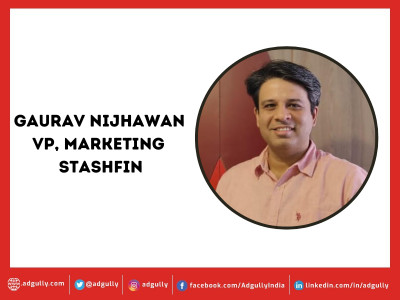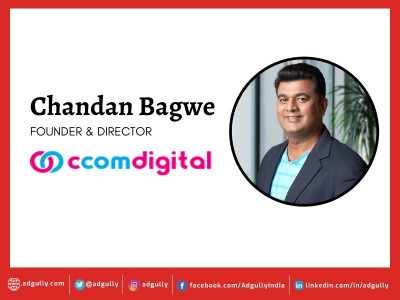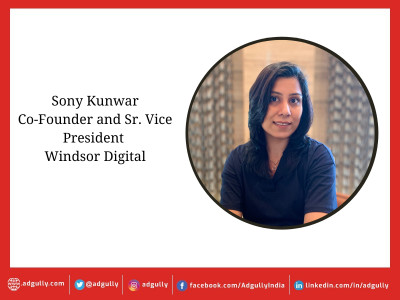The Tipping Point for Marketing Campaigns
Authored by Ashwin Pavery, Communication Lead, Freo
Seth Godin once said “Marketing is no longer about the stuff that you make but about the stories you tell”.
Storytelling is always an art, and it can be either engaging or boring on a spectrum of human attentiveness. When you want to convey a story through a campaign, you need to be very sure that it’s clearly an edge-of-your–seat story and not something where you lose the attention from the crowd. Even though the core intent is to create a story, there are several points that need to be worked at from the bottom to create your final output. Influencing factors like, your allocated budget for the campaign, the reason that you want this campaign to exist, the people you will be talking to through this campaign and that one metric you want to change in the end!
When approaching any campaign, one question is inevitable: “Why?”
This is the tipping point of a marketing campaign. Important questions to also ask are; what is the whole purpose for doing this campaign? Why does this campaign need to go live with this select set of audiences? Only if we could solve the initial Why can we understand more on How we execute on the latter steps.
Once WHY? And HOW? are clear, we can move into “WHAT” would my campaign actually consist of. These three angles give us the blueprint and eventually the storyline takes shape. Simon Sinek refers to this exact conundrum when he speaks of the “Golden Circle” to create a sustainable project model which is not bound by time.
WHY should this campaign exist?
The existence of a marketing campaign lies in solving the problem of why?
Starting your brainstorming with multiple answers for WHY this campaign needs to be done can literally create a butterfly effect on all other connected portions of your marketing.. Even if it looks like a simple question and one that is to the point, it’s just a tip of the iceberg.There needs to be a thorough understanding and evaluation of the ‘WHY” in different dimensions since this sets the base. The following pointers can provide a basic guideline for how to start…
- Why is this campaign important to achieve a specific goal
- Why is this metric important and how to achieve it from a business level and a campaign level.
- Why is this campaign targeted towards a specific group of people?
Identifying the metric that needs to be moved will help to bring more certainty and it makes the problem more quantifiable. Say, if a campaign is done to improve the sales figures or revenue generation for a product, these kinds of metrics help set the expectations very easily. The next question that needs to be addressed is; Why was this specific group of people targeted for this campaign? If you are running a sales campaign you will prefer to do the campaign with people who are most likely to convert and those are people who are considered to be either champions, loyal or promising. There is a choice then to construct campaigns with monetization only with the hibernating customers.
Once you have your obvious answers for the “Why”, there comes the next question, How?
HOW you want to execute this campaign is literally just finding a road of execution to achieve your goal identified in the “why”.
In today’s world of fast paced digital transformation, you have two different categories to choose from - Traditional channels and Digital Channels. In order to make your choice easier a research is required on where the target audiences are located. To understand this more clearly, its betst to create a detail on a customer persona.. The better set of data points you have on each target audience segment, the better the chances of getting things right in your campign. Here are the points to keep in mind while creating a persona.
- Age and Gender
- Location (Tier 1, Tier 2 or Tier 3 Cities)
- Most preferred channels, based on previous campaign performance that you have run down on this specific target group.
Let’s take a look at each of the points mentioned for the “How” here.
Age and Gender
Understanding age and gender gives you basic profiles such as Gen-X, Gen-Y, or Gen-Z. This will let you decide the channel of the campaign much more easily. Say, if the targeting is down to a very young population, it is usually preferred to go with an online channel to speak for your brand, because folks in this category tend to spend substantial amounts of time in the online space. But at the same time if you want to target members in an age group of 45+, and furthermore, women/men in the household, it might be better to go with the print media. Since a lot of members of these age groups still indulge in reading newspapers and magazines.
Location
Even after arriving at the preferred channel to go live it’s better to not finalise it immediately. For example, if you are targeting people in a tier 3 city where the internet penetration is very low, and choosing an online channel for the campaign, the math you have done previously might go wrong and it leads to poor conversion. Newspaper and TV commercials are a possible way to improve reach when online channels find it hard to penetrate.Location gives you additional allowances to have a more effective campaign with the choice of vernacular language preferences of the region.
Preferred Channel
This specific question is dependent on the type of campaign. For example, If the campaign is a retargeting campaign then you will have the previous data of the customers engagement, that can be used to figure out which channel, what time and when they usually were active in that channel. There is no point sending push notifications to target groups if they don’t have your app Installed, or sending SMS campaigns to people who are on DND. If this is going to be a first of its kind, then you have to put more effort in solving the first two factors of Age/Gender and Location. Even in the case of first time campaigns, there might be increased chances of cost, but with proper optimization, this can be rectified.
Campaign costing is another integral part that needs to be evaluated at this point This includes being careful about allowing only those steps which don’t take a hard hit on the marketing budget.
If you analyse how things were back in the day, when a social media platform such as Facebook was starting, and how it accelerated the digital transformation and influenced the way marketers conceive their campaign today - it is interesting to observe the lessons and realise how far it has come in the space of online marketing. When there were fewer brands around it was easier to be seen and leverage digital platforms for marketing campaigns. But the customer adoption rate to these platforms, established as well as new, have skyrocketed and the brands adopting digital measures to attract potential customers have also increased. So it is very relevant to target the right audience and make sure the product offering is relevant to the target group. The costing optimization also comes up with a practice of right copy for the creatives. Social media had the primary goal of sharing information and connecting people with each other, many don’t go on there with the specific purpose to buy something specific. The art or key today is to write or produce quality content that allows people to stumble upon it when they are browsing these platforms.
The last part of the puzzle: What?
This speaks of the “WHAT”content one would want to communicate and what one would want the audience to do in response to the communication received. At this point of the campaign, the main focus is on the product or service that you are offering to the customer. What are the unique value propositions that will fit into the pain points that you have identified for the customers in the earlier stages of brainstorming for the campaigns. These USPs can be reflected in the ad copy and creative copy. There are specific ways you can optimize your ad copies to ensure good conversions. The PAS is one such model (Problem, Agitate and Solution). For example, if you have identified a pain point existing in the journey of a customer, you start by stating the problem and further agitating it and then conveying what solution you have to offer for that problem.
There are numerous factors which will shape a successful marketing campaign. Solving the problem keeping in mind Simon Sinek’s golden rule will definitely reduce any wrong impact or any deviation the campaign will take from a planned route. When you look at the “tipping point or points” it is never limited to any channel or the target group. It depends on the type of relationship you want to build with your prospects or your existing customers. If you look at the way the integrated marketing and communication strategies have become essential no matter what sort of business you are venturing into. All the hooks and corners need to be tied together so that the efforts that you put in won’t go in vain.
The way digital transformation was happening on a global level and how it accelerated post covid is actually at an alarming rate. All kinds of businesses can work on finding a place to digitally fit in . Another movement which Apple Inc have started, the “Ask app not to track” has literally shaken a billion dollar ad industry, on top of rising customer awareness on data privacy. On the other hand, traditional media is losing its share compared to digital media. Still, there are places where penetration is only possible through such mediums, but those kinds of channels don't promise the analytics which the new age digital ad solutions offer. Definitely it is going to be a tough call for all marketers out there to find the right balance between the cost and conversion to craft an end to end marketing campaign. In order to get the right output it is always advisable to listen to your customers and understand their concerns. This will eventually help you to identify the pain points and thereby solve for the Why, How and What.
DISCLAIMER: The views expressed are solely of the author and Adgully.com does not necessarily subscribe to it.

















Share
Facebook
YouTube
Tweet
Twitter
LinkedIn